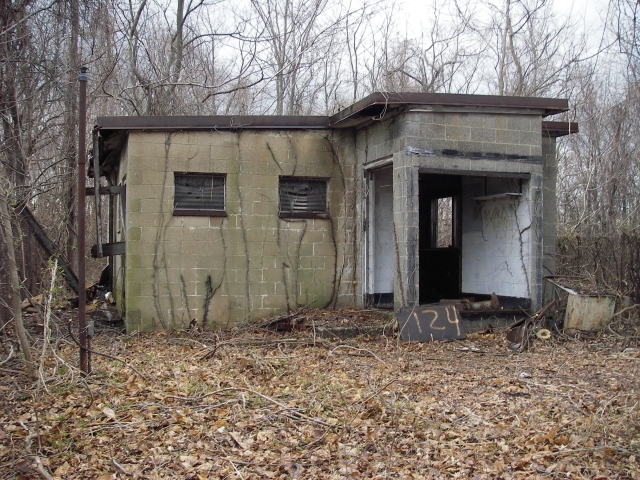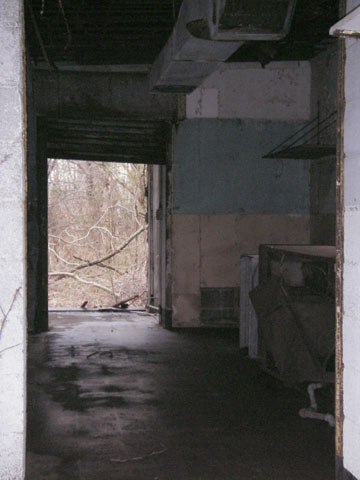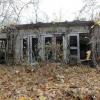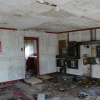|
The Integrated Fire Control (IFC) Area of a Nike missile battery tracked targets and controlled the flight of a missile from launch to detonation. It also usually served as the administrative center of the battery.
New Defenses on Old Works
At Fort Slocum, the IFC Area for Nike Battery NY-15 was a fenced compound covering about an acre. It incorporated the southeastern quadrant of the old Mortar Battery around Pit A of the long-abandoned Battery Haskin and the ground just to the west.
The IFC Area comprised a mix of existing buildings and new construction. Two of the five temporary buildings housed servicewomen during the Second World War, Buildings 130 and 133, were inside the compound’s fence. Two new buildings had been built on the old battery itself: the Sighting Station (Building 124) and the Generator Building (Building 127A). There were also three trailer-mounted radar units positioned on concrete pads to locate and track a target and guide the Nike missiles to it.
The Sighting Station was the heart of the IFC Area. It housed the control room, radar panels, and computers for target tracking and missile launch and guidance. It was a small one-story concrete block building. Trailers containing the critical electronic equipment needed to run the station were docked at each end of the building.
The Generator Building supplied backup power for the IFC Area to replace the commercial power that normally ran the facility. It housed diesel-driven electric generators that were started up when the battery went on alert, since in an actual attack, commercial power might be disrupted.
The Second World War-era barracks inside the compound served as the IFC Area’s operations buildings, housing sensitive administrative work and similar activities. The personnel of the station lived in nearby buildings outside the compound.
The Nike Integrated Fire-Control Area at Fort Slocum
01-aerial 1966 from Cross Brown appraisal IFC-3Aerial view of the Integrated Fire Control Area for Nike missile Battery NY-15 at Fort Slocum (adjacent to center and lower right mortar pits), looking north, late 1950s.   02-124 IMGP3943The Nike Sighting Station (Building 124), which was the control center for the Nike missile battery at Fort Slocum, looking northeast, February 2008.   04-124 IMGP3954rmInterior of the Nike Sighting Station (Building 124), February 2008.   05-127a context e 117The Nike Generator Building (Building 127A), which supplied the Nike control center at Fort Slocum with electricity during alerts, looking east, November 2005.   07-127a interior 118Interior of the Nike Generator Building (Building 127A), November 2006.  
Battery NY-15: A “Combat-Ready Outfit”
In a 2007 interview, Rich Lowery, who served as a radar operator in the Sighting Station from 1959 to 1961, described daily life at the battery. Most of the work was routine: daily radar adjustment, constant tracking of local commercial and military air traffic, regular shifts on guard duty and administrative tasks, studying, waiting and watching. There were drills too, of course, and on a couple of occasions, there was the excitement of a real alert when an unknown aircraft flew into the battery’s patrol sector.
Mr. Lowery remembers the pride he and his fellow crewmen felt in their work. It was the Cold War, and they "were a… combat-ready outfit.”
|














